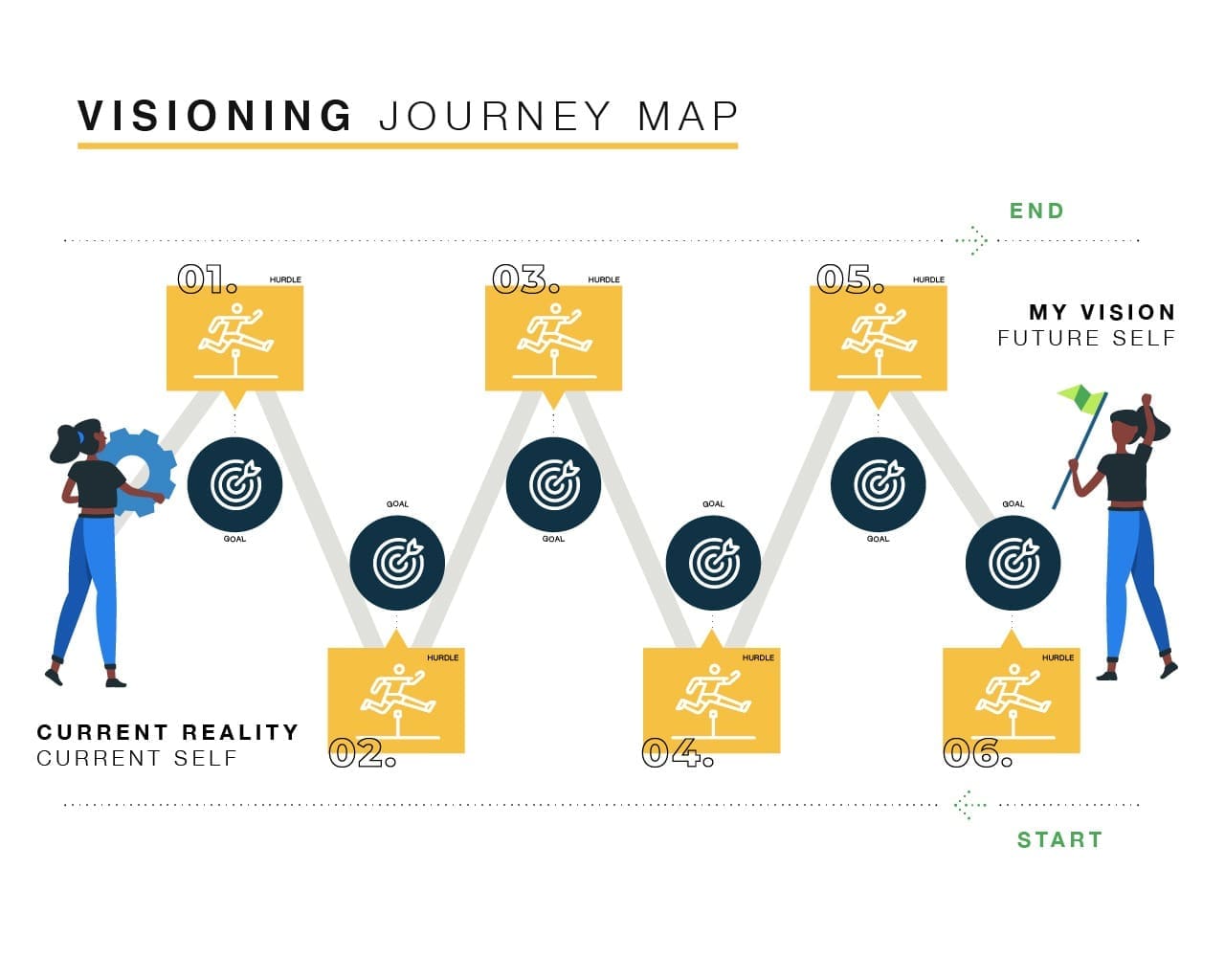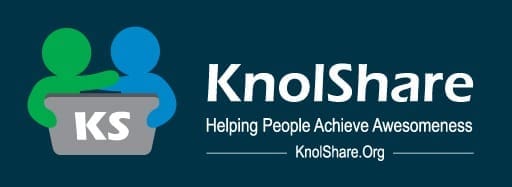Visioning Journey Map Guide

Watch the Visioning Journey Map Guide
Why is the Visioning Journey Map (VJM) Tool Beneficial?
The Visioning Journey Map (VJM) provides clarity to your promise and journey. Creating a VJM is an essential activity for leaders and associated teams to effectively define and communicate hurdles that may affect goals and strategies but also emphasize associated goals to pursue and achieve. The VJM is not intended to replace horizon plannings that may span multiple years. The intent is to create shorter feedback loops that enable leaders and teams to take corrective actions for success. The key activities of the VJM include:
- Establishing well-formed outcomes.
- Starting with the end in mind. Work from the future vision to the present and back to the future.
- Going deeper to explore areas to increase awareness for improvements.
- Debriefing for frequent learning.
The key benefits of a well-defined VJM include:
- Defining the future self-vision.
- Assessing current reality.
- Identifying hurdles.
- Identifying goals.
- Communicating and sharing the journey.
Be Clear and Kind to Yourself and Others

By using the Neuro-Linguistic Programming (NLP) Well-Formed Outcome, individuals can set, work towards, and achieve their goals more effectively. It provides a structured way to articulate goals, ensuring they're positive, achievable, and beneficial to both the individual and the wider context. Use the well-formed outcome steps to define your outcome actions for results.
Benefits of using the NLP Well-Formed Outcome include:
- Clear Goal Setting: The NLP Well-Formed Outcome allows individuals to set clear, precise, and detailed goals. It eliminates ambiguity and enhances focus on what needs to be achieved.
- Positive Framing: The technique encourages the expression of goals in positive terms, which can help to increase motivation and commitment to achieve the goal.
- Self-empowerment: It encourages individuals to set goals that are within their control, which increases feelings of self-efficacy and personal power.
- Contextual Consideration: The Well-Formed Outcome framework requires individuals to consider the wider impacts of achieving their goals, fostering a more holistic and ethical approach to goal setting.
- Sensory-based Evidence: The technique encourages the use of sensory-based evidence to identify when the goal has been achieved. This makes the goal more tangible and measurable.
The NLP Well-Formed Outcome is achieved by asking a series of questions to ensure the goal meets all the necessary conditions. These questions focus on:
- Stating the Outcome in Positive Terms: What do you want to achieve? It should be something that you want, rather than something you don't want.
- Evidence Procedure: How will you know you've achieved your goal? What will you see, hear, or feel?
- Achievability and Control: Is achieving the goal within your control? Can you start and maintain the steps needed to achieve this goal?
- Resources: What resources do you have, or need to have, to achieve this goal?
- Impact: What will be the impact on you and others around you once you've achieved this goal?
How to Use the Visioning Journey Map
Use the Visioning Journey Map to clearly identify hurdles as well as outcome goals.
- Step 1: Start with the end in mind by creating a Vision.
- Step 2: Start in Month 03 and write a Hurdle you may encounter.
- Step 3: Move to Month 02 and write a 2nd Hurdle, then move to Month 01 write a 3rd Hurdle.
- Step 4: Describe your Current Self / Reality
- Step 5: Start in Month 01 and write a desired Goal.
- Step 6: Move to Month 02 and write a 2nd Goal, then move to Month 03 and write a 3rd Goal.
- Step 7: DONE
Go Deeper with Inquiry Throughout the Journey

As you engage with this activity, ask the following questions for a deeper connection:
- When facing each of the identified hurdles, who do you need to be?
- In what ways might seeing the world differently limit you?
- Who do you get to become when you have achieved the goals of the journey?
- What are the qualities required to make you feel satisfied along the way?
- Do you have the support system you might need as you continue the journey?
- Why is this vision significant to you?
Debrief for Continual Growth

When you are finished with the Visioning Journey Map, spend some time reflecting, relating, and remembering. Ponder these questions:
- What did you discover?
- Why were these selected hurdles important to you?
- How will you move forward with goals beyond that vision?
